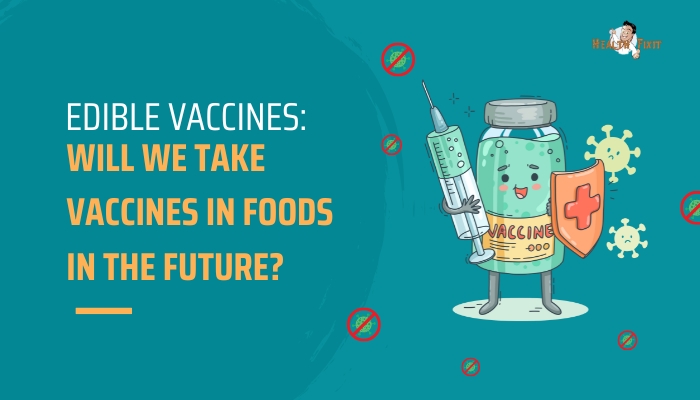Introduction
In the world of healthcare, one-size-fits-all dosing often proves inefficient—or even unsafe—because patients vary in age,
metabolism, genetics, and other factors. Enter 3D printing for pharmaceuticals, a burgeoning technology aiming to create custom-tailored drugs in precise doses, potentially combining multiple active ingredients in a single
“polypill.” Imagine your local pharmacy printing your exact daily pill, personalized to your weight, genetic profile, and medical history. This article highlights the science behind 3D-printed medications, how they could reshape pharmacy practice, and the logistical hurdles we must overcome.
The Concept of 3D-Printed Drugs
From Manufacturing to On-Demand
Traditional drug manufacturing involves mass production—billions of tablets, each with uniform dosage. By contrast, 3D printing can layer or extrude small amounts of powdered or liquid drug formulations, constructing custom pills.
Pharmacists or specialized dispensing clinics might produce personalized doses in minutes, replacing off-the-shelf prescriptions.
Tailored Dosage and Polypills
- Precision Dosing: Instead of splitting tablets or combining multiple pills, a 3D-printed pill can deliver the exact mg of each active ingredient.
- Polypill Approach: A single printed unit might contain multiple medications with different release profiles (e.g., immediate release for one drug, extended release for another), simplifying complex regimens.
Rapid Prototyping
When new formulations or dose tweaks are needed, pharmaceutical scientists or pharmacists can quickly modify digital designs—akin to how 3D printing revolutionized rapid prototyping in engineering.
This agility speeds up R&D and ensures medication customization for niche patient segments.
How It Works: The Printing Process
Materials and Drug Formulations
3D printing uses filament-based or powder-based techniques. In pharma, the “ink” or powder includes:
- Active Pharmaceutical Ingredient (API): The drug compound.
- Binders/Excipients: Provide pill structure, control release, taste masking, etc.
- Additives: Colors, flavors, stabilizers, or release modifiers.
Printing Methods
- Fused Deposition Modeling (FDM): Heating drug-laden filament and layering it.
- Inkjet Printing: Spraying micro-droplets of drug solution onto substrate layers.
- Selective Laser Sintering: Using a laser to fuse powder layers containing API.
Each approach must preserve the drug’s stability and bioactivity.
Customization Software
Pharmacists or automated systems feed patient data (weight, genetics, disease specifics) into software that sets the pill’s shape, dose, and release profile. After design confirmation, the 3D printer executes it. This synergy ensures each pill is tailor-made.
Advantages for Patients and Healthcare
Optimized Therapies
Rather than prescribing multiple pills multiple times a day, doctors can choose a single “cocktail pill.” This fosters adherence—especially for elderly or chronic patients with complicated regimens—and better manages side effects by adjusting doses precisely.
Pediatric and Rare Disease Applications
Children often need fractional doses or struggle swallowing standard pills. 3D-printed forms can feature child-friendly shapes, flavors, or dissolvable films. Similarly, orphan drugs for rare diseases can be produced on-demand without large-scale manufacturing overhead.
Reduced Waste and Inventory
Hospitals or pharmacies won’t need massive stockpiles of every dosage form. They print on demand, cutting expired drug disposal and logistic complexities. Over time, cost savings might follow, though initial printer investments are high.
Challenges and Roadblocks
Regulatory and Quality Control
Ensuring consistent dosage accuracy and product integrity is paramount. Regulators (like FDA, EMA) will require robust guidelines—ensuring 3D printing meets Good Manufacturing Practices (GMP).
Continuous monitoring and calibration of printing processes must guarantee each pill matches standards.
Stability and Storage
Some drug formulations degrade under heat or mechanical stress in certain printing methods. R&D in stable excipients is essential to maintain efficacy. Also, printing environment conditions (humidity, temperature) must be meticulously controlled.
Training and Workflow Changes
Pharmacists need specialized training in 3D printing technology, from digital design to printer operation. The shift from pre-made stock to just-in-time manufacturing demands new logistical flows, as well as acceptance from clinicians and patients.
The Future of Pharmacy
In-House Printing at Pharmacies
In a near-future scenario, you might go to a pharmacy with your prescription. The pharmacist scans a bar code describing your personalized formula
, loads materials into a printer, and minutes later hands you a custom pill pack. Over-the-counter meds might also shift to “small-lot” customized production.
Home-Based Micro-Printers?
Long-term, some envision personal micro-printers—like coffee machines for medication—though safety and regulation complexities remain substantial. For now, such direct-to-consumer setups are speculative.
Integration with Digital Health
Smart systems could track patient data (via wearables or EHR) and auto-adjust medication dosing. The next refill might then print a slightly altered dose if health metrics demand it—enabling near real-time therapy optimization.
Ethical and Practical Considerations
Access and Cost
Initially, 3D printing devices and raw materials might be costly, possibly limiting adoption to big hospital systems. Over time, scaling production and improved competition could democratize the technology, but bridging global inequalities remains a challenge.
Security and Counterfeiting
If printing software or raw materials fall into illicit hands, a black market might produce unauthorized or substandard drugs. Safeguards—like encryption, unique chemical markers—may deter unscrupulous usage.
Patient Safety and Education
Patients must trust that each 3D-printed dose is accurate. Transparency on how the process ensures dose uniformity and quality is crucial. As the technology becomes mainstream, public outreach and professional training will cultivate confidence.
Practical Tips for Stakeholders
- Stay Informed: Pharmacists and clinicians should monitor pilot programs, guidelines, and vendor solutions for 3D printing in healthcare.
- Explore Partnerships: Collaborations with digital health or manufacturing experts can help navigate the complexity of designing stable printing protocols.
- Prepare for Regulatory Shifts: The FDA or EMA might issue specialized frameworks for on-demand printing. Engage in professional associations to shape and follow new standards.
- Focus on Use Cases: Identify immediate applications (e.g., pediatric dosing) to pilot. Show success with small-scale adoption to build momentum for broader usage.
Conclusion
3D-printed medications promise a transformative leap in how drugs are formulated, dispensed, and personalized. Instead of standard pills with fixed doses, patients could soon receive custom-built regimens
, combining multiple actives into a single polypill, precisely measured for their physiology. While the road to broad adoption involves navigating regulatory,
technical, and economic hurdles, the allure of more precise, flexible, and potentially less wasteful drug manufacturing is compelling. As the technology evolves, we may witness a new era where “the pharmacy of the future”
is less about stocked shelves and more about digital recipes and printers that craft our treatments on demand.
References
- Trenfield SJ, Awad A, Gaisford S, Basit AW. 3D printing pharmaceuticals: drug development to frontline care. Trends Pharmacol Sci. 2018;39(5):440–451.
- Norman J, den Drijver E, Harte R, et al. 3D printed pharmaceuticals: pharmacy of the future? J 3D Print Med. 2018;2(3):89–90.
- Awad A, Fina F, Trenfield SJ, Gaisford S, Basit AW. Personalized medicines for all: how 3D printing can bring tailor-made drugs within reach. AAPS PharmSciTech. 2020;21(5):1–8.
- Beck R, et al. The potential of polypills via 3D printing: a critical review. Int J Pharm. 2021;599:120456.
- Li X, Jia L, Peng F. Design of multi-drug 3D printed tablets. Expert Opin Drug Deliv. 2021;18(4):429–442.
- Goyanes A, Fina F, et al. 3D printed personalized tablets for the nutritional management of phenylketonuria. Int J Pharm. 2019;557:280–289.
- Marriott JL, Wilson KA, Boyle CC. Regulation of small-batch prescription drug manufacturing. Clin Ther. 2020;42(9):e183–e192.
- Thabet Y, et al. Precision medicine meets 3D printing: bridging personalized dosing in clinical practice. J Pharm Sci. 2021;110(5):2047–2058.
- Wu J, Wu W, et al. Security in digital pharmaceuticals: protecting 3D printing from counterfeiting. Trends Pharmacol Sci. 2022;43(1):5–8.
- Kolakovic R, et al. Printing technologies in drug delivery applications. Expert Opin Drug Deliv. 2020;17(1):7–17.







